The C4 Corvette (History of the Corvette, Part 6)
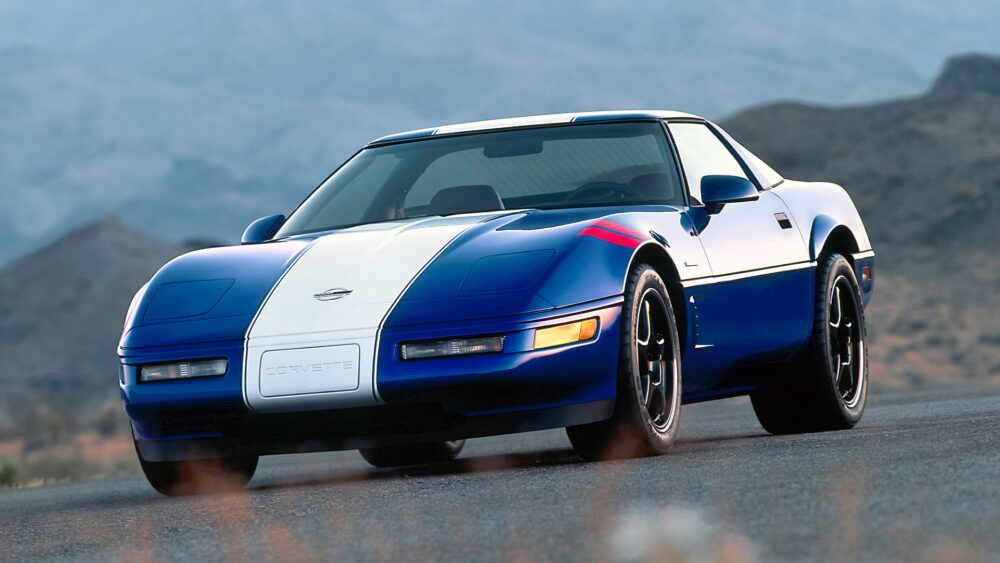
Fitting for the decade of excess, Chevrolet introduces their most radical Corvette yet, the C4. A timeless design and true return to form.
Welcome to Corvette History Part 6: The C4. Here are our prior installments:
Part 1: Origins & C1
Part 2: Small Block Chevys & Solid Axles (C1 Continued)
Part 3: The Sting Ray (C2)
Part 4: 1968-1973 (C3)
Part 5: 1974 – 1982 (C3 Continued)
Before the C4, the Corvette’s success hinged upon its combination of three factors: grand-tourer fit and finish, high performance, and relatively inexpensive price point. Now, this helped propel the Corvette name to soaring success by the 1980s. But as anyone who’s lived during that time will certainly attest, the 80s was a time of dramatic, rapid change.
When it comes to the automotive industry, this change took place both over and under the hood, with styling radically altering thanks to the post-Oil Crisis Malaise Era in full effect. And the Corvette certainly wasn’t spared this fate, either, with power figures remaining low and bodies growing wildly more aerodynamic. What was needed, more than anything, wasn’t another restyling. It was an entirely new platform, built from the ground up. Enter the 1983* – 1996 C4 Corvette.
*Note: 43 pre-production units were produced before the 1983 MY cancellation. One currently exists, VIN 1G1AY0783D5100023 held at the National Corvette Museum.
Re-Engineering the Corvette
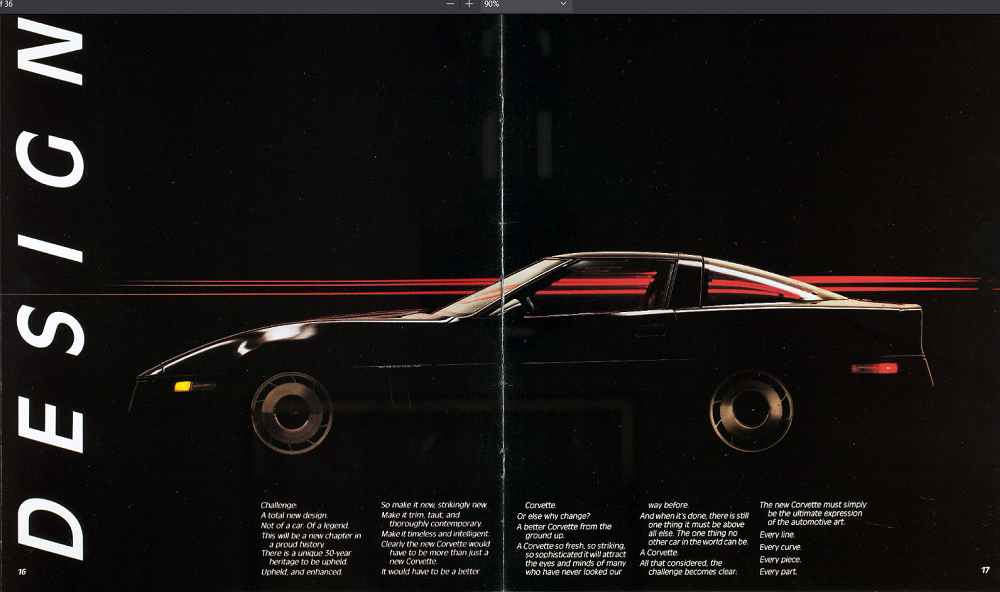
This latest Corvette represented the first-ever departure from Zora Arkus-Duntov’s vision. As such, a new team designed the car from scratch, headed by Dave McLellan and penned by Jerry Palmer. McLellan’s new chassis design builds upon the second-generation Y-body in use since 1976. It uses a traditional box-frame perimeter design with a single large central structural hoop which forms the rear arch, and non-structural windshield posts.
The main body, made from galvanized steel, necessitated exceptionally deep side rails below the doors to maintain structural integrity. Think of it like big I-beams running lengthwise. The rear section – trunk and rear assembly – was an all-aluminum separate component. Likewise, the front lower suspension assembly was its own assembly, constructed from aluminized steel and plastics.
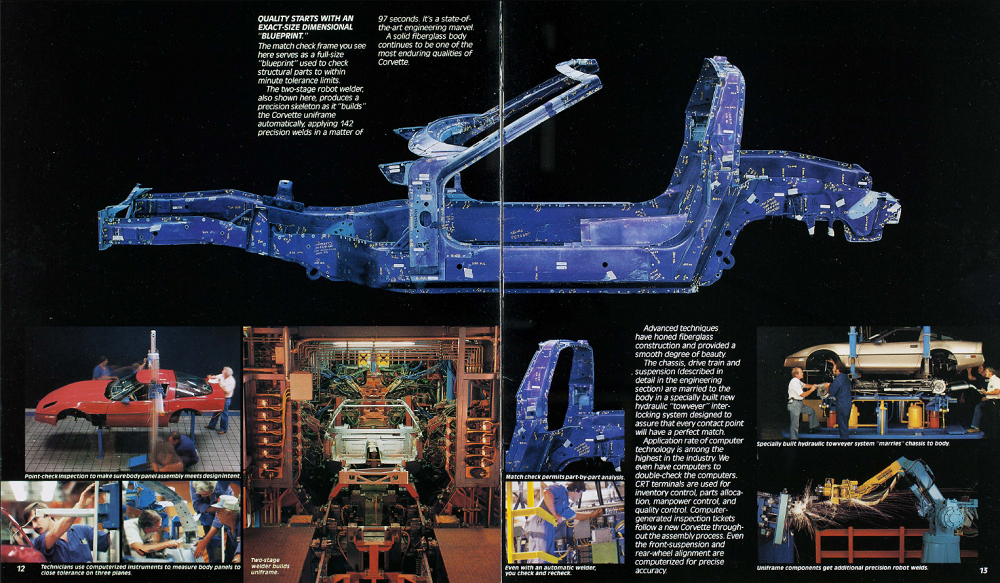
The front suspension also marked an important innovation, completely departing from the C3’s coilovers. Officially named, appropriately, “Corvette Leaf Spring,” the design features a fiberglass-reinforced plastic (FRP) mono-leaf spring. The way it’s designed runs counter to what most people think of when they imagine a leaf spring. Essentially, it’s a transverse leaf with control arms on either side which dictate the vertical motion of the wheel. Meanwhile, the leaf itself, running width-wise, doubles as an anti-roll bar.
FRP’s properties enable a lighter design thanks to a higher tensile strength under load. This combination both increased longevity over traditional leaf springs by an estimated ten-fold, as well as lightened the suspension by one-third over traditional coilovers. In addition, because it sat low in the car, it aided with center of gravity and balance, both crucial elements in a vehicle emphasizing handling and performance.
Because of the way the vehicle was assembled, none of the body panels nor engine were stressed members. As such, it isn’t considered a true unibody. Instead, Chevrolet advertised the C4 as “Uniframe” in brochures. This fundamental design remained unaltered throughout the life of the C4 Corvette, only improved upon incrementally between model years.
Engines and Transmissions
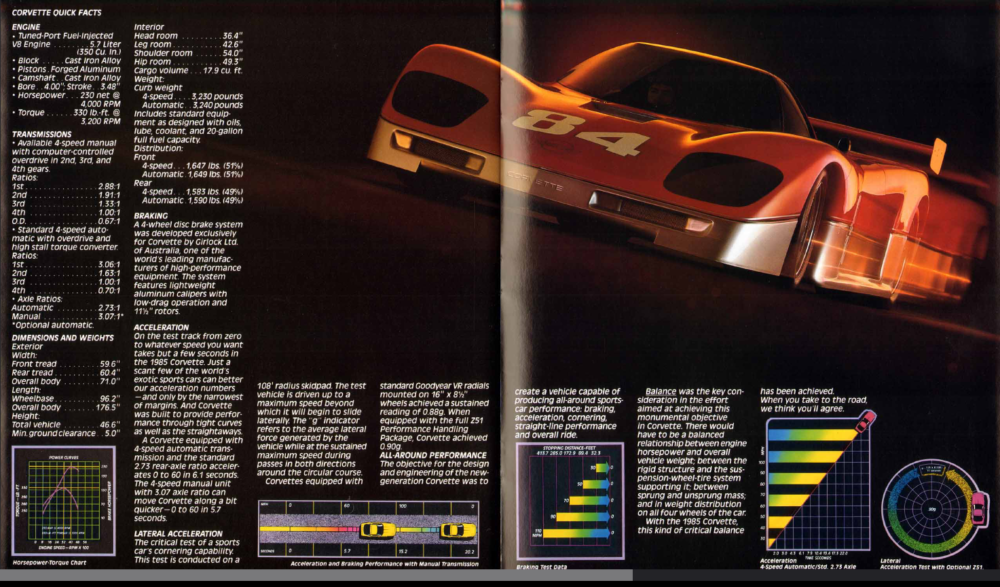
Originally, the C4 Corvette’s powertrain lacked a lot of punch. Bear in mind that this was still prime Malaise-Era, so power figures remained dramatically low across the board for most vehicles. Performance often came through handling and lightness, which Chevrolet improved upon with the aforementioned frame and suspension. But in terms of power, they stuck to their guns, going for the 205-horsepower L83 350 c.i. Quite underwhelming in terms of performance, though again, nothing out of the ordinary. Original 1984s only featured 700R4 automatics, with the manual arriving in January 1984.
This particular transmission’s easily one of the most bizarre ever put in a Corvette. It’s a Doug Nash 4-speed manual with three automatic overdrive gears on all but first gear. This effectively makes it a 7-speed manual with the push-button OD. An interesting and uniquely quirky design that’s so ubiquitously 80s.
However, by 1989, Chevrolet phased out this unusual transmission in favor of a ZF 6-speed. And subsequently, GM retired the 700R4 for MY 1994 in favor of the 4L60-E Hydramatic.
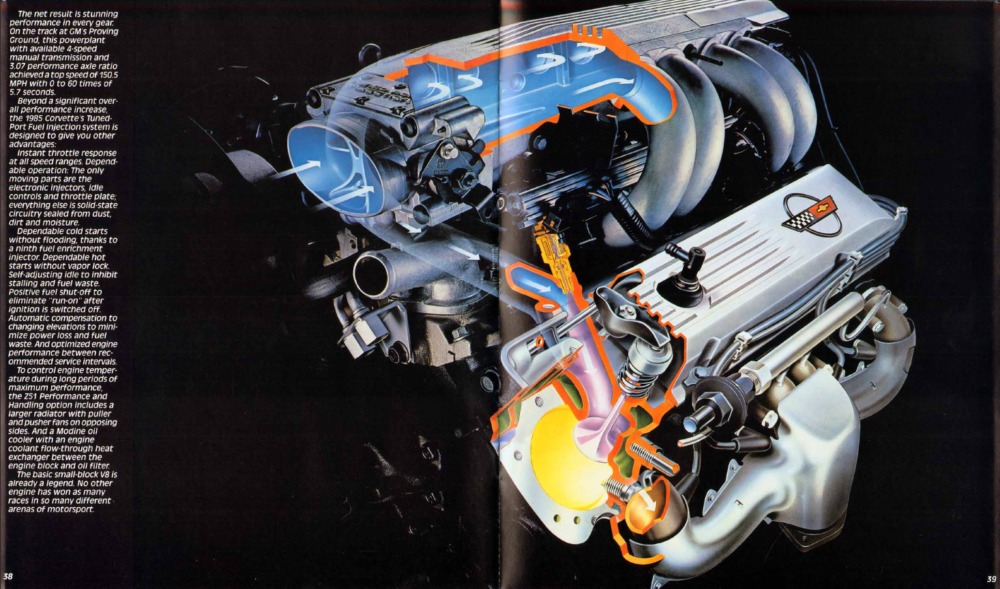
Engine-wise, this generation witnessed the next significant development of the classic GM V8: the advent of the second-generation and LT-series. (More on this in a moment.)
Originally, the C4 featured the L83 engine carried over from the final-production C3. However, this soon gave way to the L98, representing the vast majority of 80s Corvette engines. This powertrain produced 230 horsepower at launch, which increased to 250 by 1991. Significantly, this engine featured more advanced tuned-port injection, in keeping with coupling efficiency and performance.
The L98 marked the final gasp of the first-generation small-block Chevy engines, however, as the 1990s brought with them a full return to form.
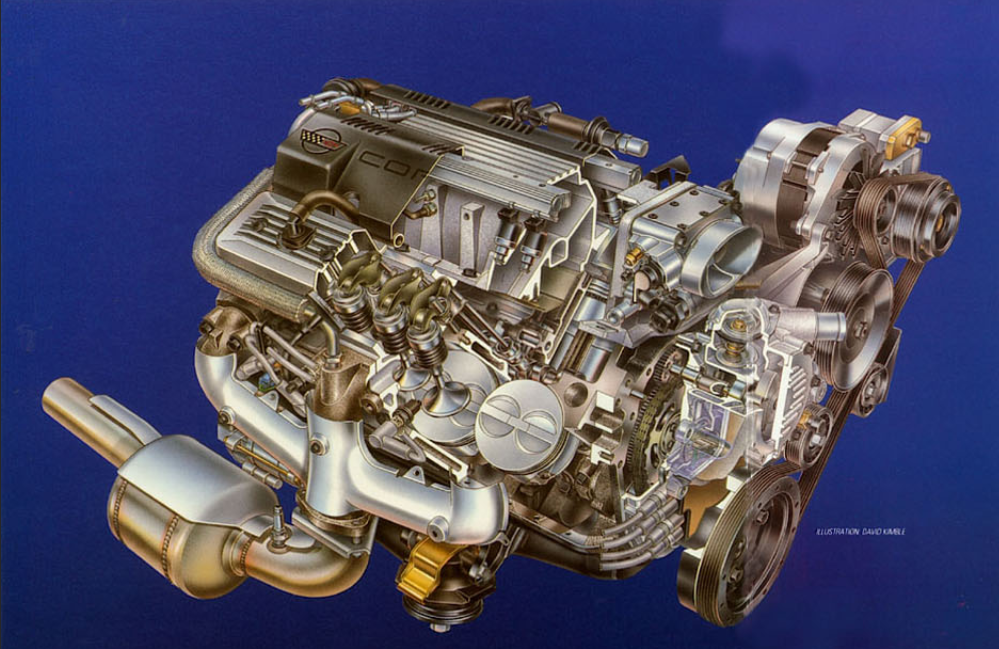
Enter the LT-series, beginning of course with the LT1 (We’ll go over the 1990 LT5 in a bit). This engine featured an all-new top-down cooling system, allowing for cooler heads and thus higher compression. Chevrolet redesigned much of the engine from the ground up, now featuring a reworked block and head design. However, the mounts and bell housing bolt patterns remained the same with Gen. 1s, allowing for easy and clean swaps.
This new engine offered a stout 300 horsepower at 5000 RPM, supplemented with the LT4 performance package in 1996 at 330 horsepower. The LT4 was only available with the 6-speed ZF manual. It featured a variety of performance upgrades, such as more aggressive cam and crank profiles, 10.8:1 compression, high-flow intake manifold, and much more.
Interior and Exterior
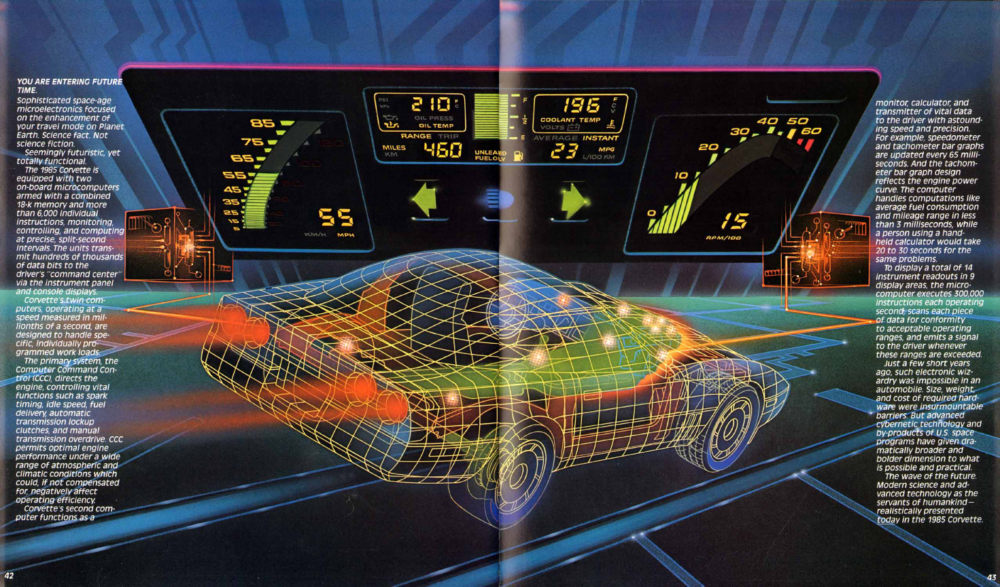
In a further bid to update the Corvette, GM ditched traditional fiberglass construction for sheet-moulding composite plastics. Due to power figures being low originally, the Corvette’s shape heavily emphasized aerodynamics, retaining its GT heritage through a combination of lightness and low friction coefficient. This basic design changed very little throughout the years, only receiving one facelift in 1991, easily distinguished by the wraparound lower fog lights and turn signals.
Rearwards, the car gained a rounded rear fascia in 1990 with the ZR-1 package (more on this later), opposing the earlier concave design. Of course, the car retained the traditional pop-up headlights, this time adopting single lights for the first time since 1957. By the C4’s midpoint, the slippery, boxy design became synonymous with 1980s sports cars, to the point where its silhouette is unmistakable even to non-gearheads.

Interior-wise, well, that’s also incredibly iconic to anyone who knows Corvettes. The car featured either a removable hardtop or, later, a convertible in 1986 onwards. Rearwards, cargo space became far more practical thanks to an openable rear glass hatch. And lastly, that iconic dashboard design.
Described as having “Fighter jet” influences by GM, the instrumentation was more ’80s than MTV. It prominently featured a liquid-crystal display instrument cluster, dominated by digital readouts of the car’s vitals. The entire dashboard copied this boxy design, from the A/C vents to the Delco sound system. Though certainly an acquired taste, it features an unquestionably unique aesthetic about it, which sadly ended with the 1990 revision.
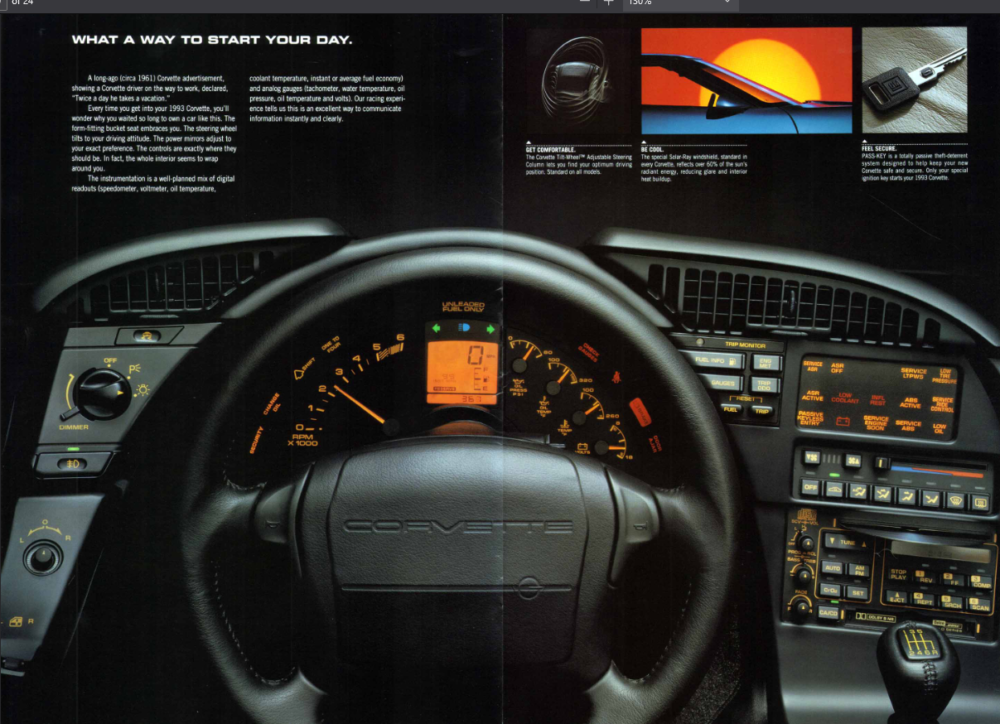
The only significant interior facelift totally redesigned the dashboard and gauge cluster. New for MY 1990, this redesign included part-LCD, part-analog gauges, a wraparound dash, and new instrumentation. Furthermore, the Corvette gained a driver’s side airbag for the first time. This new dashboard layout persisted throughout the entirety of the 1990s, its basic design echoed within the upcoming C5.
Making the Corvette Faster
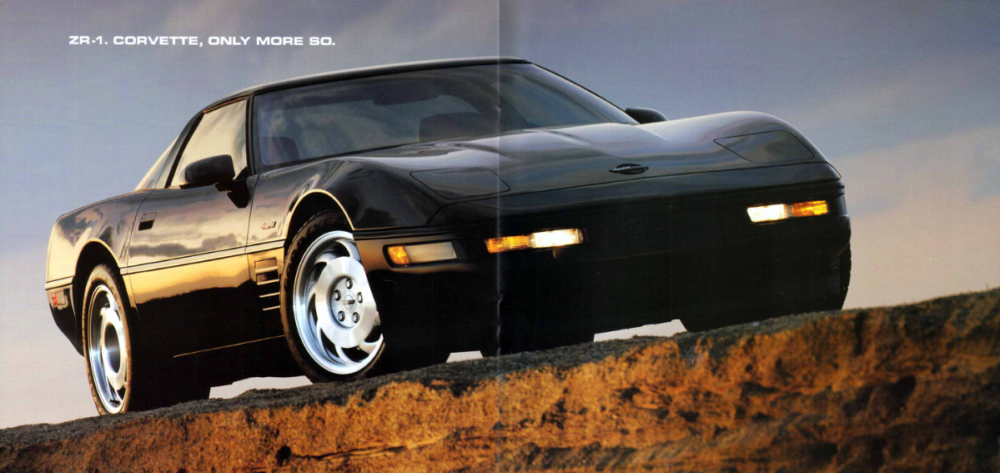
Alright, now we get into the really good stuff. Let’s begin with the return of the now-infamous ZR-1. First prototyped in 1989, Chevrolet reintroduced the ZR-1 performance package with MY 1990. And at its core laid that exquisite LT5 engine, unique only to the ZR-1 Corvette, with 6-speed gearbox only.
This engine marked a radical departure from traditional small-block design, featuring a Lotus-designed 4-valve DOHC configuration. The first ever DOHC in a Corvette, it produced at-minimum 375 horsepower before increasing to 405 in 1993. While it’s true that even the C2 produced similar power figures, bear in mind that this is net horsepower, not gross horsepower.
What this meant is that, in combination with the slippery body shape, this car was fast, to the tune of 181 miles per hour. Although the body shape can (and indeed, has) go much, much faster. As seen with the SledgeHammer, one of the infamous Callaway Corvettes which achieved 254.8 mph in 1987.
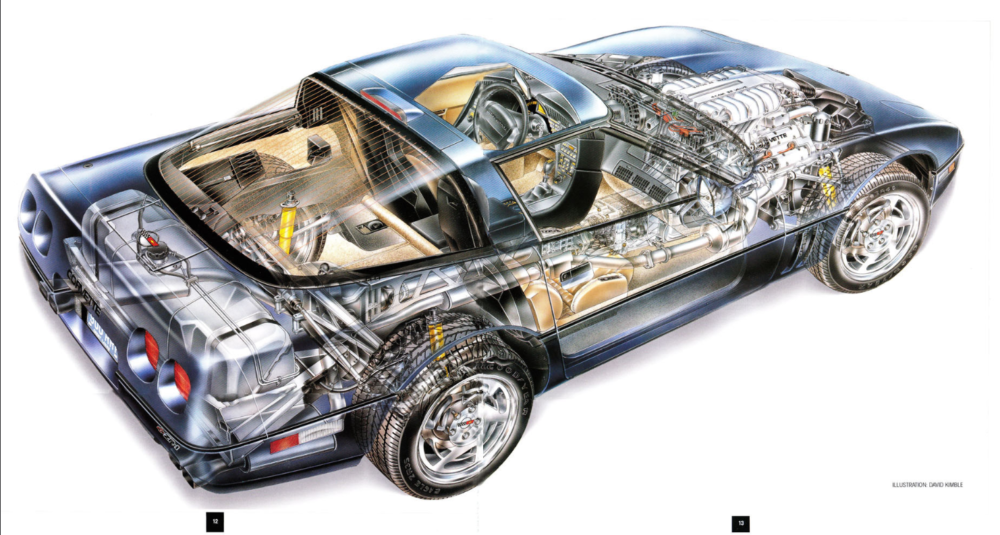
The ZR-1 ran from 1990 through 1995. This topped out the options catalog with an eye-watering $31,000, effectively doubling the car’s price. In spite of its steep price point, it provided performance easily exceeding the likes of European grand tourers. This was further backed up by Lotus-developed braking and steering systems, Bosch ABS, Bilstein and Lotus F1 co-engineered suspension, and much more.
Effectively, the ZR-1 became the absolute pinnacle C4 factory Corvette that money could buy. Chevrolet wasn’t fooling around this time. They even produced a totally separate ZR-1 sales brochure with several pages listing pure performance specs.
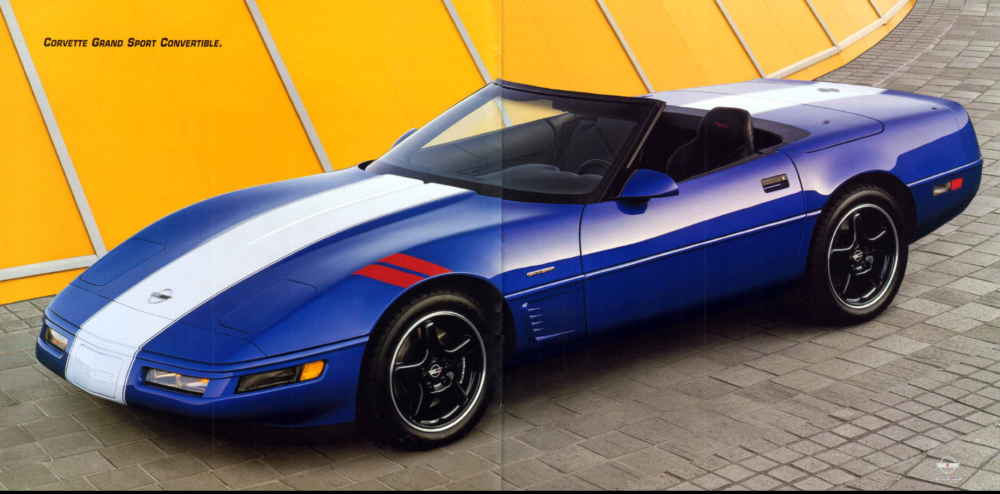
And though the ZR-1 was without a doubt the greatest factory C4 performance-wise, we’re not done yet. Let’s move on to the next icon in the list, the Grand Sport. Clad in Admiral Blue with the white stripe and those iconic red hash-marks, this Corvette marked the penultimate edition of the C4 line.
Produced in 1995 and 1996, the Grand Sport featured the 330-horsepower LT4, bespoke rims, wider tires, and full appointments throughout. GM produced only 1,000 units, 810 coupes and 190 convertibles. This iconic design remains one of the most recognizable special-edition Corvettes today, thanks to its unique livery. Chevrolet followed this up with the similarly-equipped Collector Edition, dressed in Sebring Silver with special emblems.
Concluding the C4 Lineup
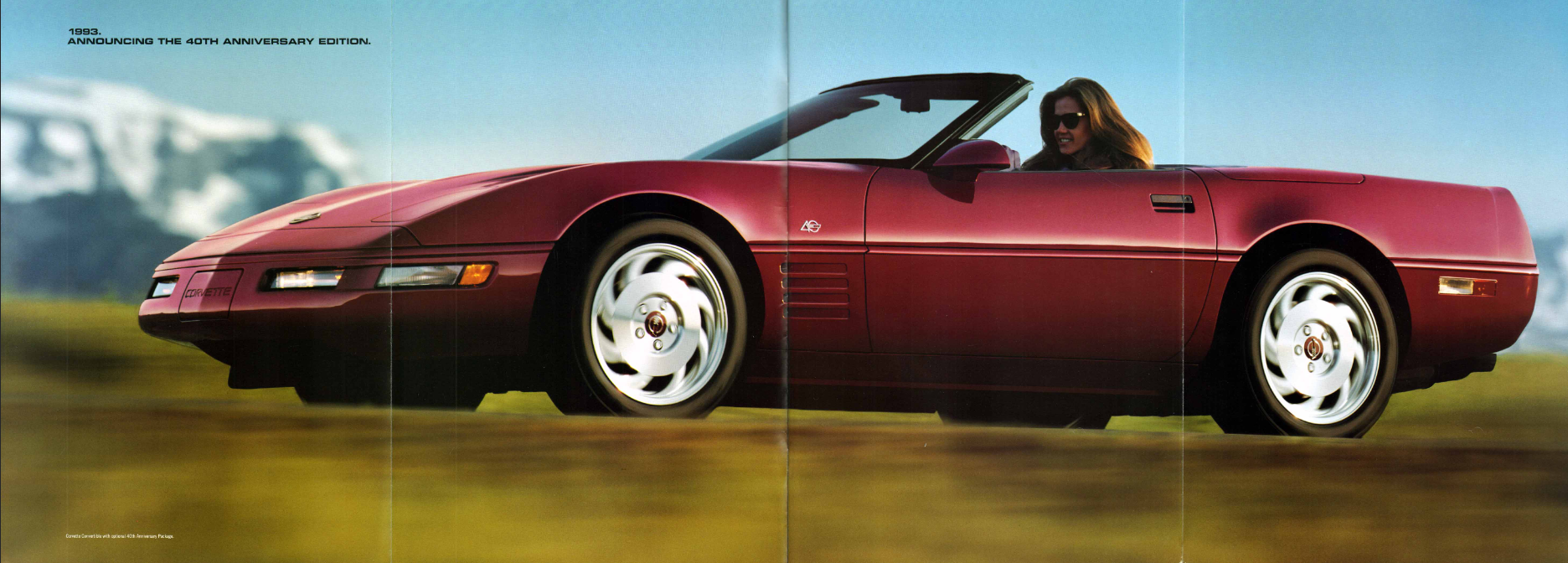
Over the years, the C4 Corvette spawned a huge variety of special editions, both official and aftermarket. Likewise, the car’s popularity soared thanks to widespread attention in popular media and stints as both racing vehicles and pace cars. And let’s not forget its iconic, timeless design. From the Triple-White 35th Anniversary Edition of 1988 to the Callaway B2K package, there was something for every enthusiast with this car.
The C4 Corvette was available to the public from MY 1984 to 1996, with a dramatic shift in performance between those years. However, the overall look and feel of the car remained entirely similar throughout. Thanks to its 350 c.i. engine and excellent suspension layout, the C4 provided a balanced and spirited drive from start to finish.
Coupled with a stout return to form with the ZR-1 and Grand Sport, it provided what many see as a highlight of interesting and unique 20th-century Corvettes. Not to mention an absolute monster of speed, thanks to its ability to churn out ridiculous power figures and a streamlined body. Overall, the C4 remains an excellent Corvette to this day, in most of its iterations, and an icon of 80s and early 90s excess.
Brochures used: 1984 – 1996 Corvette. All photos copyright GM Media.
Join the Corvette Forums now!
